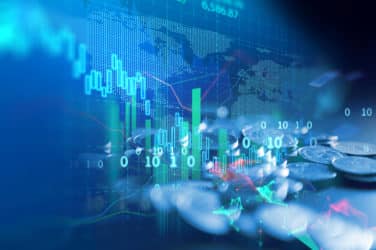
 
AI may soon be coming to FX. That’s not a sci-fi program announcement.
The electronic foreign exchange trading platforms of 2016 are light years ahead of the earliest iterations of a few decades ago, the most advanced of which matched orders via a screen, perhaps using an algorithm that by today’s standards would be kindly described as rudimentary.
Aside from efficient high-speed execution, pre-trade analytics, smart order routing, transaction cost analysis and multi-asset capabilities are just some of the value-adds that institutional traders now expect as de rigueur.
But technologists and market practitioners note current systems are hardly the endgame, and there remains substantial upside for how electronic platforms can facilitate FX trading.
One potentially needle-moving advance would be applying artificial intelligence, or machine learning, to the buying and selling of currencies. AI has made inroads on some institutional equity desks, and FX is seen as fertile ground for expansion of the methodology.
A prerequisite for artificial intelligence to gain acceptance on FX desks is a more widespread use of algos. This is an ongoing evolution as mid-sized and smaller trading and investing firms gain the same comfort with electronic FX trading that large global institutions already have. “We’re finally seeing algos creep into FX as a normal means of execution,” said Chris Matsko, head of FX trading services at Portware, a FactSet company.

Chris Matsko, Portware
Taking it a step further, “artificial intelligence would look at the first algo (in a given suite) and the all of the relevant data points within it, and decide whether to start there or go to the next one,” Matsko said. “It will sweep across all the algos, looking for the best way to fill the order, with the technology to change to a different algo within milliseconds.”
“I think artificial intelligence is the next big thing and it will probably be adopted in OTC markets like FX within the next three to five years,” Matsko told Markets Media. “People have to be comfortable with algos first; once they’re comfortable with algos, they can be comfortable with artificial intelligence driving those decisions.”
AI can also pull in a pre-trade cost framework, so when for example a trader is looking to do a $100 million euro-dollar trade, it can identify top counterparties and trade venues based on an assessment of historical trading along similar parameters and market conditions.
“Applying artificial intelligence to make real-time decisions on the desk is going to be the next play in the space — thanks to its promise of demonstrable best execution, incremental gains in performance, and greater workflow efficiency,” Matsko said. “Whoever gets that right can accurately feed pre- and post-trade analytics, and be a leader in the space.”
To be sure, machine learning is still considered groundbreaking even in equities, whose market-structure evolution is considered years in front of FX. So market participants cite more mundane considerations when asked about the future of FX trading platforms.
“In the G10 or deliverable currency space, I think there will be more consolidation across the different venues that are out there,” said Philip Simotas, portfolio manager at $400 million global macro manager ROW Asset Management.
“Also, banks are getting a better idea of what they want their role to be in the market,” Simotas added. “I think you’ll see some of the big money center banks that operate their own venues effectively, continue to be very important to the marketplace.”
For non-deliverable forward contracts, which were developed for emerging markets with capital controls and are typically cash-settled in U.S. dollars, it’s all about what new rules are promulgated by policy makers in Washington, London and Brussels. “The NDF space is still blurry to me,” Simotas said. Nobody knows for sure how the regulation is going to pan out and what its impact will be.”
Featured image by






